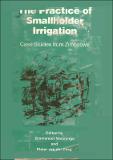| dc.description.abstract | The shortage of land in rural areas, which is a consequence of historical circumstances (Ranger, 1985, Moyo, 1986) and the low rainfall in the regions where the majority of communal area people live, means that irrigated plots are indispensable to both women and men. The plots are regarded as an important part of their livelihoods from which they derive food and cash. Irrigated plots are mainly allocated to married couples (Madondo, 1992; Dikito, 1993; Chimedza, 1989). The name of the husband is usually registered because it is he who is perceived as head of the household, although in many cases it is the women who cultivate the irrigated plots. This registration practice raises questions regarding the access of married women to irrigated plots, which is the focus of this chapter. Widows often have problems with access to plots (see Dikito, 1993: 6-7).2 It will be shown that married women also face difficulties.
In this chapter, I analyse three cases from an irrigation scheme in Manicaland province. In the first two cases, I look at gender conflicts over plot allocation by focusing on the images husbands and wives construct, reproduce and transform concerning each other and themselves, and the strategies they devise to cope with the situation. Husbands construct certain images concerning their wives in order to remain in control of the irrigated plot. Wives, on the other hand, devise certain strategies to sustain themselves and their children. In their conflicts, wives and husbands have recourse to traditional, semi-official and official arbitration. The third case is an example of official arbitration and explains how a government official in the irrigation scheme, representing the state agency, Agritex, decides on the two conflicts over irrigated plots. Reference is also made to policy documents to indicate the gender images which are constructed and reproduced by government officials. The three cases show the cultural and institutional impediments which help to shape plot allocation. | en |


